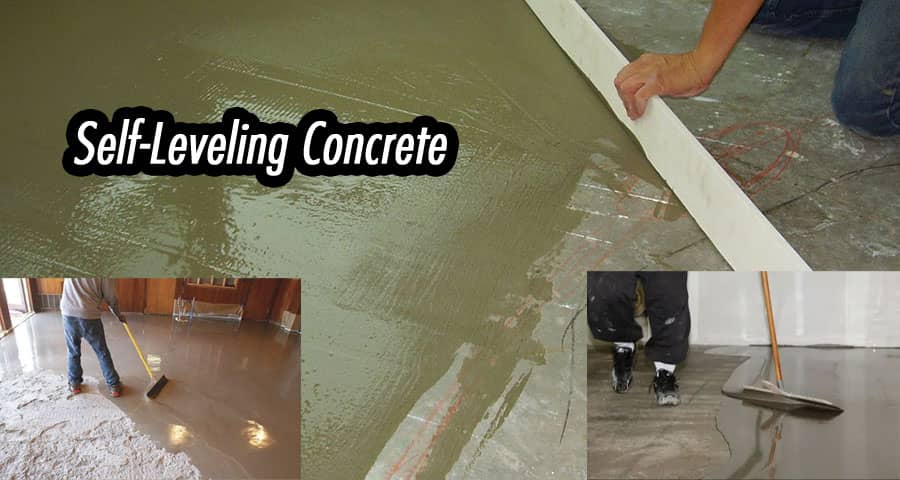Self-Leveling Concrete: The Modern Solution for Smooth and Level Surfaces

Self-leveling concrete, a revolutionary material in the construction industry, has transformed the way floors are designed and constructed. From its composition to the application process and advantages, understanding this material is crucial for both professionals and DIY enthusiasts.
Introduction to Self-Leveling Concrete
Self-leveling concrete, often referred to as self-leveling underlayment or self-leveling cement, is a specialized mixture designed to create flat, smooth, and level surfaces. It's commonly used to correct uneven floors, resurface existing concrete, or create a flawless base for flooring materials like tiles, hardwood, or carpets.
How Self-Leveling Concrete Works
This unique material comprises a blend of cement, polymers, and other additives that facilitate its self-leveling properties. When mixed with water and poured onto a surface, it spreads effortlessly, filling gaps and voids to form a flat, seamless finish.
Preparation Before Application
Prior to application, proper surface preparation is imperative. The surface must be clean, free from debris, and structurally sound. Additionally, priming the surface ensures better adhesion and prevents rapid drying of the self-leveling compound.
Application Process of Self-Leveling Concrete
The application involves a systematic approach, including mixing the compound, pouring it onto the designated area, and spreading it evenly using specialized tools. Careful attention to detail during this process guarantees a flawless result.
Factors Affecting Self-Leveling Concrete
Environmental factors such as temperature and humidity significantly impact the performance of self-leveling concrete. Additionally, the viscosity and thickness of the mixture influence its leveling capabilities.
Advantages of Using Self-Leveling Concrete
The utilization of self-leveling concrete offers multiple advantages. Not only does it provide smooth and level surfaces, but it also saves time and reduces labor costs compared to traditional leveling methods.
Limitations and Considerations
Despite its numerous benefits, self-leveling concrete has limitations. Understanding these limitations, such as its inability to fix structural issues, is crucial before application.
Popular Applications of Self-Leveling Concrete
This versatile material finds extensive use in residential, commercial, and industrial settings. From leveling basement floors to creating showroom-quality surfaces, its applications are diverse.
Comparison with Traditional Concrete
Comparing self-leveling concrete with traditional concrete highlights the distinct features and benefits that set them apart. The ease of application and efficiency of self-leveling concrete make it a preferred choice for many projects.
Tips for Maintenance and Longevity
Proper maintenance plays a pivotal role in preserving the quality of self-leveling concrete. Regular cleaning and appropriate care ensure its durability and extend its lifespan.
Innovations and Future Trends
Continuous advancements in technology contribute to the evolution of self-leveling concrete. Innovations like faster curing times and enhanced durability are shaping the future of this material.
Safety Measures and Recommendations
While using self-leveling concrete, adherence to safety measures is crucial. Proper ventilation and protective gear are essential for a safe application process.
Case Studies and Success Stories
Real-life examples showcasing successful applications of self-leveling concrete provide insights into its effectiveness and versatility across various projects.
Environmental Impact and Sustainability
The eco-friendly features and sustainability aspects of self-leveling concrete make it an attractive choice, aligning with modern construction practices focusing on environmental responsibility.
Conclusion
Self-leveling concrete stands as a groundbreaking solution in the construction realm, offering efficiency, precision, and versatility in achieving smooth and level surfaces.
Unique FAQs
Is self-leveling concrete suitable for outdoor applications?
Self-leveling concrete is primarily designed for indoor use. While some formulations are engineered for outdoor applications, exposure to weather elements can impact its durability and performance. It's essential to check with manufacturers for outdoor-specific versions and follow their guidelines for successful application.
How long does self-leveling concrete take to dry?
The drying time varies based on several factors, including temperature, humidity, and the specific product used. Typically, it may take between a few hours to a day for the surface to become walkable, but complete curing might take a few days or longer.
Can self-leveling concrete be applied over existing tile flooring?
Yes, self-leveling concrete can be used to resurface existing tile flooring. However, proper surface preparation is crucial to ensure adhesion. Thoroughly clean and prepare the tile surface before applying the self-leveling compound for the best results.
What are the primary differences between self-leveling concrete and epoxy flooring?
Self-leveling concrete is primarily used to level surfaces, providing a smooth and flat base for other flooring materials. On the other hand, epoxy flooring is a type of coating applied over surfaces to provide protection and aesthetic appeal. While both offer durability, their purposes and applications differ.
Does self-leveling concrete require sealing after application?
Sealing self-leveling concrete is not always necessary, but it can enhance its durability and resistance to stains and abrasions. Depending on the intended use and exposure, applying a sealant might be recommended.
